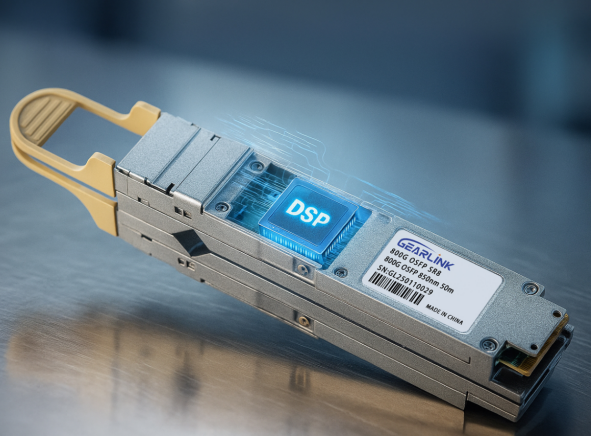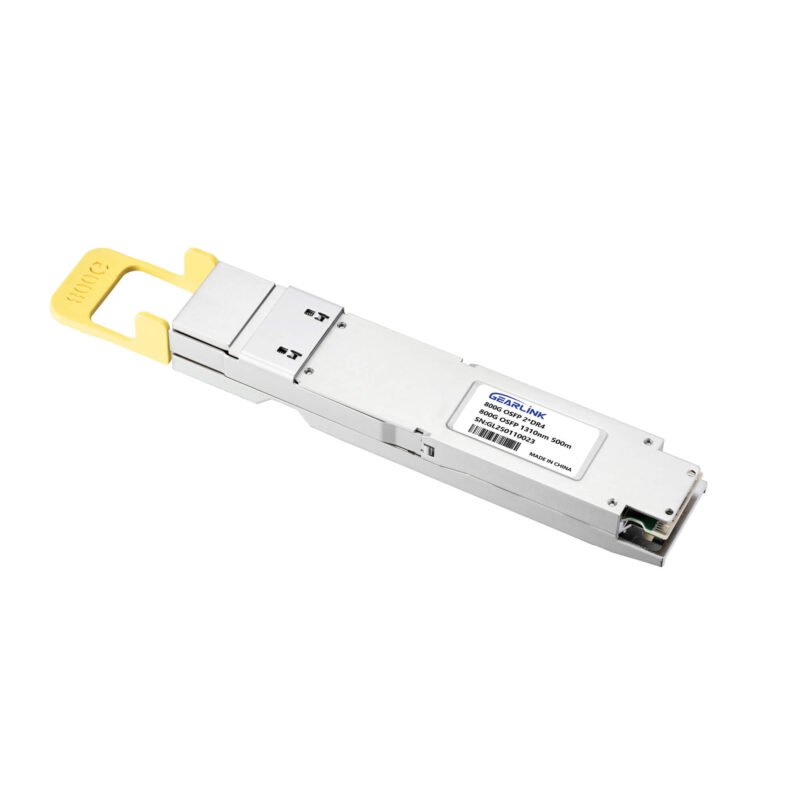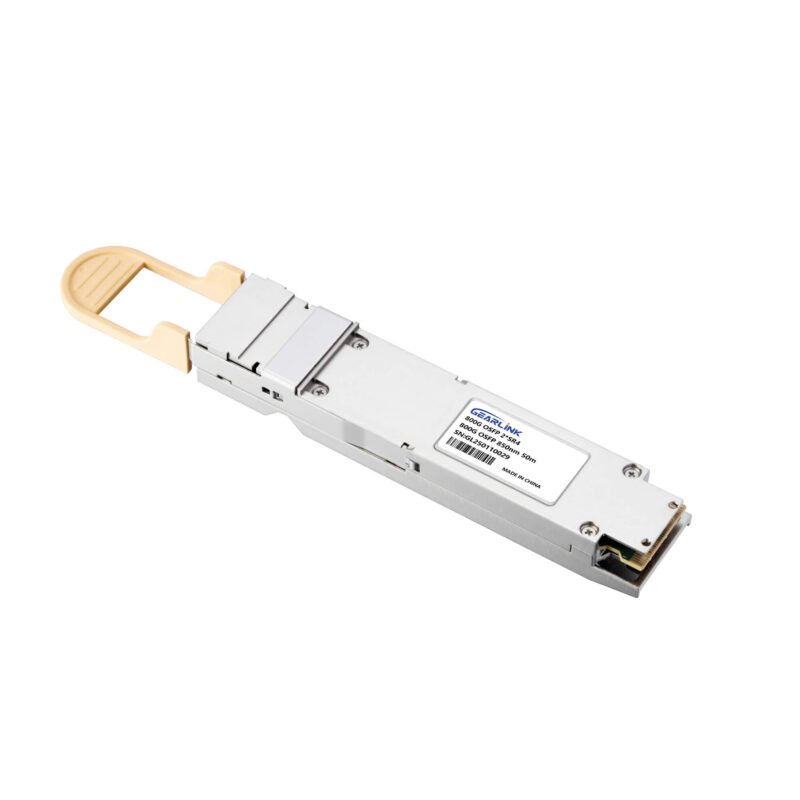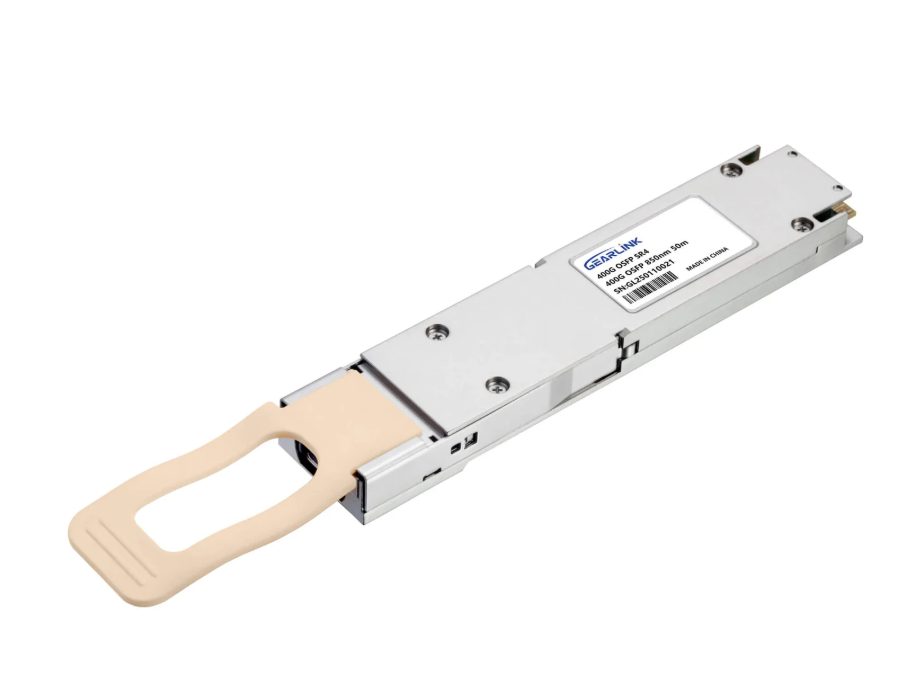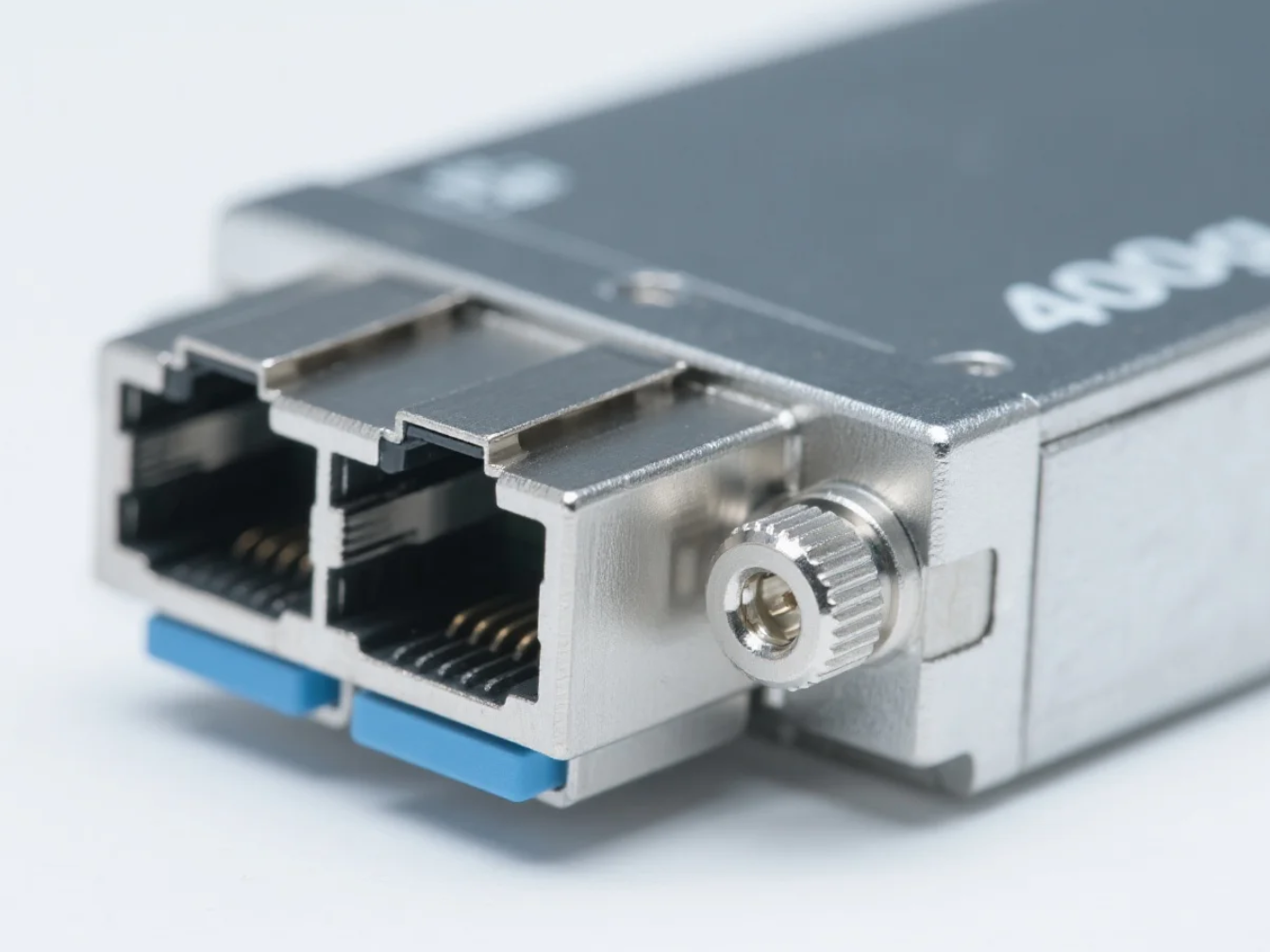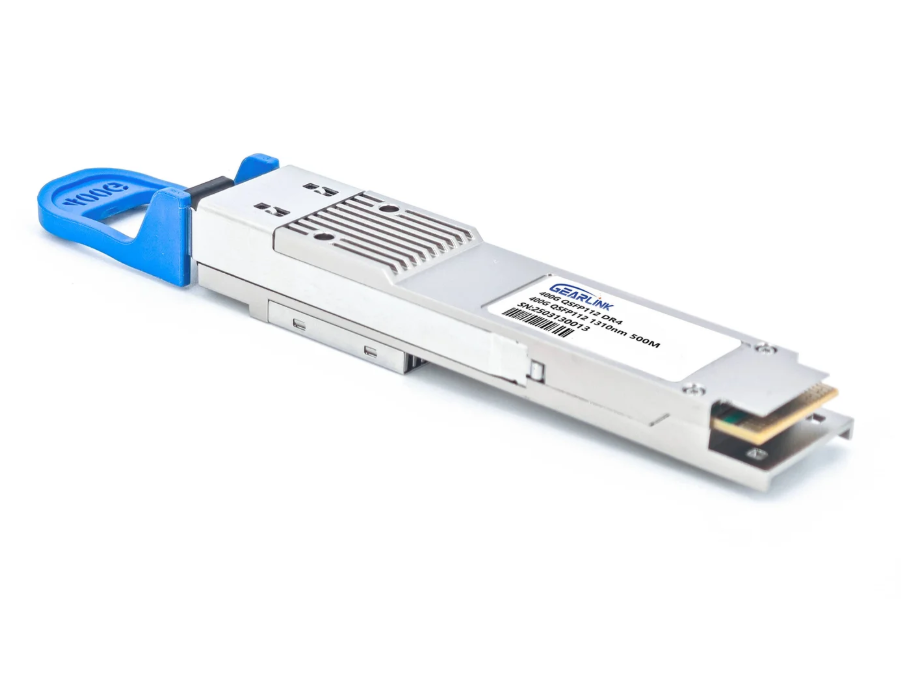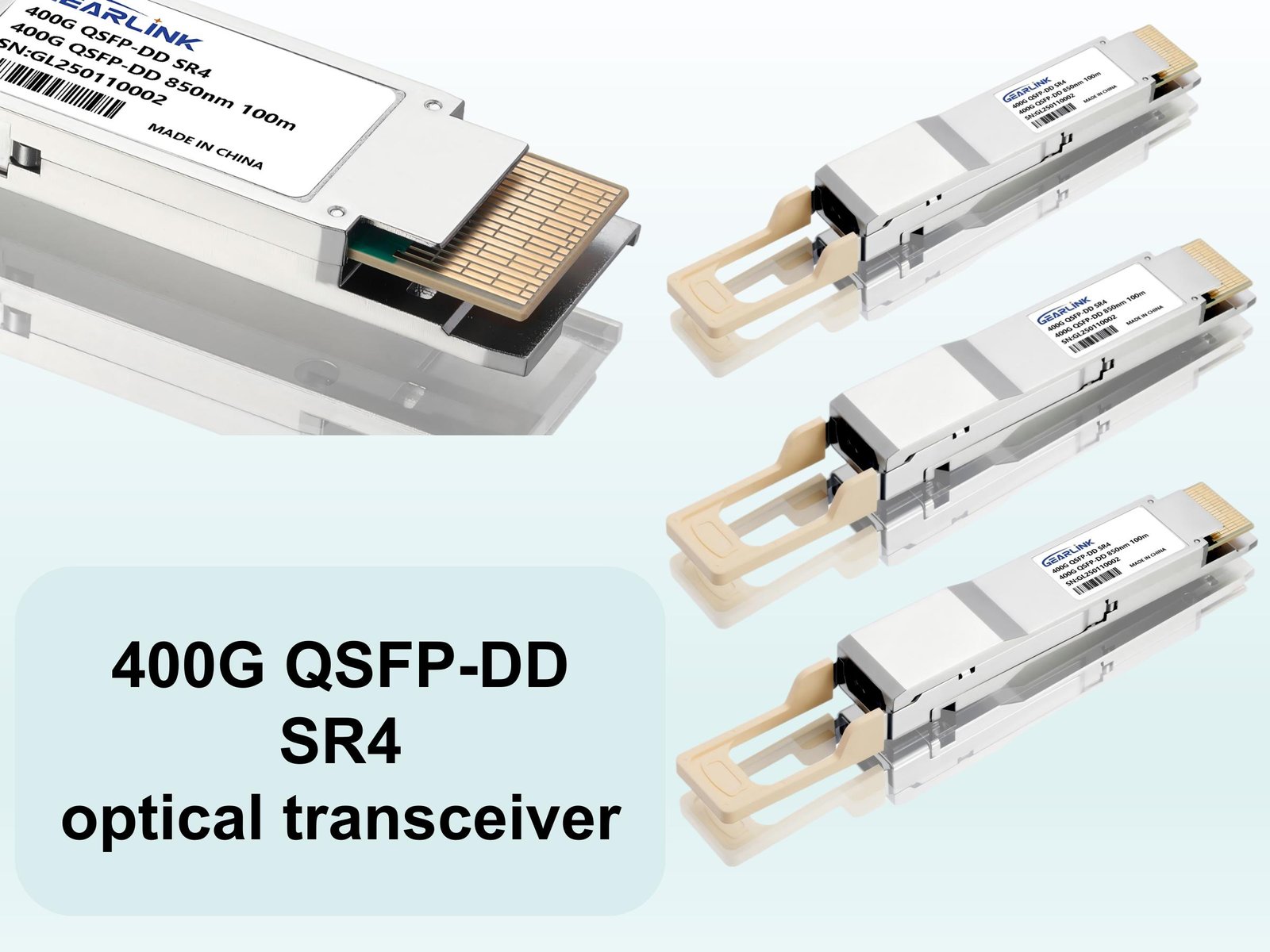With the exponential growth of digital applications, global data traffic has been increasing at an unprecedented rate. Data centers, 5G mobile communication networks, and cloud computing infrastructures are demanding ever-higher bandwidth and more reliable optical interconnections. To meet these requirements, the 800G transceiver has been introduced as the latest generation of high-speed optical communication equipment. The performance of an 800G transceiver is directly determined by its ability to process and recover complex high-speed signals, which places the digital signal processor (DSP) at the heart of its design.
Among the numerous functions handled by the DSP, two technologies are especially critical: PAM4 equalization algorithms and nonlinear impairment compensation. PAM4 equalization addresses the inter-symbol interference and linear distortions in the transmission path, while nonlinear compensation corrects distortions caused by optical fiber nonlinearities. Together, these technologies ensure that an 800G transceiver can operate with low bit error rates, extended reach, and high efficiency, even in challenging transmission environments.

Importance of DSP in 800G Transceiver Systems
The Demand for 800G Transceivers
As server counts within hyperscale data centers increase and 5G base stations are deployed on a massive scale, the demand for higher transmission rates is surging. The 800G transceiver offers eight times the capacity of a traditional 100G solution and double that of a 400G system. By providing higher bandwidth per module, it enables more data to be transmitted across fewer optical links, thereby reducing the cost per bit and improving the overall efficiency of data center and carrier networks.
The role of the 800G transceiver is not only to support raw speed but also to ensure energy efficiency, compactness, and interoperability. The technological complexity required to process 800 gigabits per second within a pluggable form factor has only been made possible with advanced DSP design.
The Role of DSP Chips in 800G Transceivers
The DSP chip in an 800G transceiver performs sampling, equalization, symbol detection, decoding, and compensation for channel impairments. As the modulation format shifts from simple NRZ (Non-Return to Zero) to PAM4 (Pulse Amplitude Modulation with 4 levels), the burden on the DSP has increased drastically. PAM4 doubles the spectral efficiency but reduces the eye opening and tolerance to noise, making sophisticated DSP techniques indispensable.
Optical transmission channels inevitably introduce impairments such as chromatic dispersion, noise, crosstalk, and nonlinear effects. Without DSP-based equalization and compensation, the signal quality would degrade significantly, leading to intolerable error rates. Thus, the DSP is widely recognized as the “intelligence” inside every modern 800G transceiver.
PAM4 Equalization in 800G Transceiver DSPs
800GBASE 2 x DR4/DR8 OSFP PAM4 1310nm 500m DOM Dual MPO-12/APC SMF Optical Transceiver Module
Price range: NT$1,699 through NT$1,768
Principles of PAM4 Modulation
PAM4 modulation encodes two bits of information per symbol by using four distinct amplitude levels. Compared with NRZ, which has only two levels, PAM4 effectively doubles the data rate for a given bandwidth. This makes it highly attractive for 800G transceiver design.
However, PAM4 also introduces serious challenges. The eye diagram of a PAM4 signal is divided into three smaller “eyes,” each of which is narrower than the single eye of an NRZ signal. This means that signal-to-noise ratio (SNR) requirements are higher, the tolerance to jitter is lower, and the susceptibility to linear and nonlinear distortions is more severe. Without powerful equalization algorithms, PAM4 signals cannot be reliably recovered.
Equalization Algorithm Principles
The equalization process compensates for linear distortions and inter-symbol interference (ISI) introduced by the transmission channel. In the context of an 800G transceiver, equalization is primarily achieved through digital filters implemented in the DSP.
Linear Equalization: A finite impulse response (FIR) filter is typically employed, where coefficients are adaptively tuned to match the channel response. By inverting the channel transfer function, the DSP restores the transmitted symbol levels.
Decision Feedback Equalization (DFE): Because linear equalization alone may be insufficient, a nonlinear structure is also used. DFE applies feedback from previously detected symbols to cancel the effect of ISI on the current symbol. This reduces post-cursor interference and enhances eye opening.
Optimization and Implementation in 800G Transceivers
To enhance equalizer performance, adaptive algorithms such as least mean squares (LMS) or recursive least squares (RLS) are implemented. In cutting-edge 800G transceivers, machine learning-based methods have also been explored, where the equalizer parameters are dynamically optimized based on real-time channel statistics.
From a hardware standpoint, the equalizer must be highly parallelized to meet real-time requirements. Processing hundreds of gigabaud symbols per second demands specialized DSP cores, pipeline architectures, and low-latency data paths. The equalization stage of an 800G transceiver therefore reflects a delicate balance between computational complexity, power consumption, and signal recovery performance.
Nonlinear Impairment Compensation in 800G Transceivers
800G OSFP SR8-800GBASE 2 x SR4/SR8 OSFP PAM4 850nm 50m DOM Dual MPO-12/APC MMF InfiniBand NDR Optical Transceiver Module
Price range: NT$539 through NT$808
Sources of Nonlinear Impairments
Optical fiber is not a perfectly linear medium. When signals of extremely high data rates such as 800G are transmitted, nonlinearities become significant. The main nonlinear effects include:
Self-Phase Modulation (SPM): A phenomenon where the intensity of the signal alters its own phase, leading to spectral broadening.
Cross-Phase Modulation (XPM): The phase of one wavelength channel is affected by the intensity variations of neighboring channels.
Four-Wave Mixing (FWM): Multiple channels interact to produce new frequency components, causing interference and noise.
These nonlinearities distort the transmitted PAM4 signal in both amplitude and phase domains, complicating detection at the receiver of an 800G transceiver.
Compensation Techniques
DSP-based compensation attempts to digitally reverse the nonlinear transformation undergone by the signal in the optical fiber. Several methods have been employed in the design of 800G transceivers:
Volterra Series-Based Compensation
The Volterra series provides a mathematical framework to model nonlinear distortions. By fitting the fiber transmission to a Volterra model, the DSP can apply an inverse filter that cancels nonlinear components. Although accurate, the Volterra method is computationally heavy.
Digital Back-Propagation (DBP)
DBP simulates the inverse of the nonlinear Schrödinger equation governing fiber transmission. Essentially, the DSP digitally “propagates” the signal backward through a virtual fiber with opposite parameters. This technique is highly effective but requires enormous processing power.
Approximate and Hybrid Methods
To reduce complexity, simplified models are often used. Machine learning techniques have been introduced to approximate DBP using neural networks, achieving comparable performance with lower power consumption. Such innovations are becoming critical in practical 800G transceivers where hardware limitations are strict.
Technical Challenges and Hardware Solutions
The main challenge of nonlinear compensation lies in its computational cost and latency. Since an 800G transceiver must operate in real time, algorithms cannot be arbitrarily complex. Solutions include:
Use of approximate DBP with reduced step size.
Implementation of compensation algorithms on FPGAs or ASICs with dedicated hardware accelerators.
Joint optimization of equalization and nonlinear compensation to share computational resources.
By addressing these challenges, nonlinear impairment compensation is becoming increasingly viable in commercial 800G transceivers.
Synergistic Application of Equalization and Nonlinear Compensation
The effectiveness of an 800G transceiver depends not only on individual DSP blocks but on how these blocks interact. Linear equalization is typically applied first to mitigate chromatic dispersion and ISI, thereby preparing the signal for subsequent nonlinear compensation. Once linear distortions are minimized, the residual impairments can be attributed largely to fiber nonlinearities, which can then be effectively addressed by DBP or Volterra-based compensation.
This synergy results in:
Lower bit error rates (BER)
Improved receiver sensitivity
Extended transmission reach
Higher overall reliability of 800G transceiver deployments
Thus, the combined application of PAM4 equalization and nonlinear impairment compensation forms the cornerstone of DSP design for next-generation optical systems.
Future Directions for DSP in 800G Transceivers
As optical communication technology evolves, several trends are shaping the future of 800G transceivers:
Integration with Artificial Intelligence
AI and machine learning algorithms are increasingly used for adaptive equalization and nonlinear compensation. By continuously learning channel conditions, the DSP inside an 800G transceiver can achieve near-optimal performance without manual tuning.
Hardware Efficiency Improvements
Power consumption remains a major challenge. The DSP accounts for a significant portion of the total power budget of an 800G transceiver. Future designs will employ more efficient ASIC implementations, multi-core parallel architectures, and possibly photonic DSP approaches.
Towards 1.6T and Beyond
The lessons learned in 800G transceiver DSP design will pave the way for 1.6T and even 3.2T transceivers. As symbol rates increase further, equalization and nonlinear compensation techniques will need to be even more advanced, making this area a continuous research hotspot.
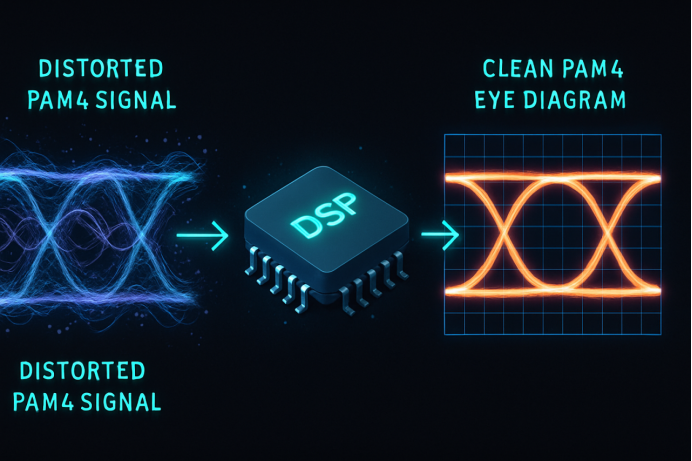
Conclusion
The 800G transceiver represents a milestone in the evolution of optical communication technology, enabling faster and more efficient data transmission in data centers, 5G backhaul, and cloud networks. The DSP is central to its operation, with PAM4 equalization and nonlinear impairment compensation playing critical roles in ensuring signal integrity.
PAM4 equalization restores degraded signals affected by inter-symbol interference and linear distortions, while nonlinear compensation addresses impairments caused by fiber nonlinearities. When these two techniques are applied synergistically, the performance of the 800G transceiver is dramatically improved in terms of bit error rate, transmission distance, and system reliability.
As demand for bandwidth continues to rise, DSP algorithms will evolve further, leveraging AI, hardware acceleration, and new mathematical models. The optimization of these technologies will not only enhance the current generation of 800G transceivers but also lay the foundation for future terabit-class solutions.
In summary, the mastery of PAM4 equalization and nonlinear impairment compensation is indispensable for the success of every 800G transceiver, ensuring that optical networks can keep pace with the ever-growing digital world.
